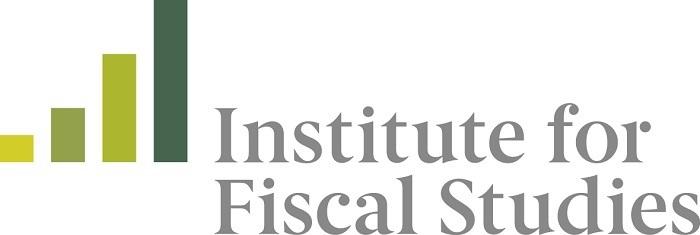Why don’t more girls study maths and physics?

A study published by the Institute for Fiscal Studies has found that girls achieving top grades in science and maths at GCSE are deterred from continuing to a higher level with such subjects, including physics, because they are affected by low confidence and an absence of peers in the classroom.
In a new observation, released today (22 Aug), Rachel Cassidy, Sarah Cattan and Claire Crawford explore what drives girls’ A level choices, including why they may or may not opt for maths or physics:
This year, girls took 22% more A levels than boys. They are over a third more likely to go to university. But the A level results released last week confirmed that girls are still less likely to take STEM (science, technology, engineering and maths) A levels than boys. Despite receiving 55% of A levels overall this year, girls received just 43% of A levels awarded in STEM subjects.
The gender composition of those staying in education beyond school leaving age has been one of the most dramatic changes in education over the last 50 years: from a situation of significant under-representation, girls took 22% more A levels than boys this year and are over a third more likely to go to university. Indeed, these gaps are now so large that the under-representation of men in higher education – especially those from poorer white families – has become a topic of significant policy interest in recent years.
Yet against this backdrop of female success, there remain areas in which women are significantly under-represented. The A level results released last week confirmed that girls are still less likely to take STEM (science, technology, engineering and maths) A levels than boys: despite receiving 55% of A levels overall this year, girls received just 43% of A levels awarded in STEM subjects. This is not the case for all STEM subjects: girls are just as likely as boys to take chemistry, and more likely to take biology. The most striking gaps are in physics and maths: girls accounted for 39% of this year’s maths A levels, 28% of further maths A levels, and just 22% of all physics A levels.
This matters because these A levels are important routes into studying STEM subjects at university and into STEM careers: an under-representation of women in maths and physics at A level leads to an under-representation of women in careers that use these subjects. This is important for society – for example, some research suggests that workplace diversity can aid innovation.
These choices also matter for the individuals themselves: having a maths A level appears to bring financial rewards in the labour market, and both subjects can open doors to potentially lucrative university degrees. For example, recent IFS research suggests that, compared to the average female graduate five years after graduation, women with a maths degree earn 13.4% more, those with an engineering degree earn 9.7% more, and those with an economics degree – another subject in which girls are significantly under-represented and for which maths is often a gateway subject – earn 19.5% more.
Explaining the gender gap in maths and physics
The fact that fewer girls study maths and physics at A level is not because they are less well prepared: attainment in maths and physics GCSE is very similar for girls and boys. Moreover, the gender gap in the likelihood of taking maths and physics A level is very similar if we focus only on students who achieved top grades at GCSE, and so are likely to be the best prepared for A level study. For example, among pupils who achieved grade A or A* (equivalent to grades 7-9 under the new system) in GCSE maths in 2010, 37% of girls compared to 51% of boys took maths A level. Among those who achieved grade A or A* in GCSE physics, just 13% of girls compared to 39% of boys took physics A level.
So why do so few girls choose to study maths and physics? As part of a pilot study for a new project investigating why girls are under-represented in maths and physics, funded by the STEM Skills Fund, we surveyed just under 300 girls across 40 schools who were predicted to achieve at least grade 7 (at least grade A) in either maths, physics or combined science at GCSE. We also surveyed their teachers. The aim was to understand what drives girls’ A level choices, including why they may or may not opt for maths or physics. These findings were summarised in a recent IFS report.
The gender gap in maths and physics does not seem to arise because girls don’t find maths and physics interesting, or because they don’t understand or value the prospects offered by a STEM career. So what else is going on? Confidence seems to be a big part of the issue, particularly when it comes to physics. We found that, despite their high predicted grades, about half of the girls in our sample agreed or strongly agreed with the statements “I often worry that it will be difficult for me in physics classes” or “I worry I will get poor grades in physics”. The figures were about half that for maths.
Teachers also cited a lack of confidence as the biggest factor affecting the gender gap in pursuing STEM subjects to A level: 80% agreed or strongly agreed that “these girls are just as able, but not as confident in their ability to learn STEM subjects as boys.” This chimes with research by the OECD and others, suggesting that a lack of confidence amongst girls might be an important determinant of gender differences in attainment in STEM subjects or the decision to pursue STEM careers.
Perhaps more challenging from a policy perspective is the fact that being one of the only girls in a physics class at school or university, or indeed in a STEM job, seems to be a major factor putting off some girls.
Two thirds of the girls we surveyed viewed STEM jobs as male dominated, and a similar proportion of teachers agreed or strongly agreed that “these girls don’t want to/feel discouraged from pursuing STEM subjects at A level because many of their female peers do not.” The fact that girls attending single-sex schools are more likely to study these subjects than girls in mixed-sex schools supports this idea.
 Sarah Kaiser, Employee Experience, Diversity & Inclusion Lead at Fujitsu EMEIA has commented on the report:
Sarah Kaiser, Employee Experience, Diversity & Inclusion Lead at Fujitsu EMEIA has commented on the report:
“Although girls are achieving top grades in science and math at GCSE, more still needs to be done to encourage the uptake of STEM subjects at A-level and all the way through university and into the workplace. A shortage of enrolment in A-level subjects is due to a lack of awareness of the opportunities that exist, and quite often the flawed perception that some groups, such as women, don’t belong in STEM professions.
“From policymakers to public and private organisations, and even parents, we all have a responsibility to encourage the uptake of STEM subjects among the next generation. It’s important that organisations across the board join forces to encourage all students—girls as well as boys—to take up STEM subjects, helping them understand the positive impact this knowledge will have on their lives and future careers. Studying computer science can lead to a career in design for example – or even technology marketing or management of a business division.
“As we fast progress towards a ‘digital first’ nation we need to ensure we are investing in both girls and boys at the very beginning of the digital journey and developing the right skills to support the future digital economy. After all, with 70 per cent of women aged 16 to 64 in work, organisations that fail to foster a whole group of talent properly in the workforce will prevent the UK from seeing a prosperous economy.”
Encouraging a critical mass of girls into STEM
This raises a tricky issue: if girls’ hesitations about studying and working in male-dominated environments are an important determinant of their decision not to study maths or physics at A level, then interventions that attempt to encourage one or two girls in a school to change their behaviour may not be enough.
What may be required are interventions which send a strong signal to girls that not just they, but also a significant number of their peers, are being encouraged to pursue physics and maths.
But even this alone may not be enough: after all, girls attending single sex schools are still less likely to take maths and physics than boys. So what is likely to work? That is exactly what we hope to explore in future research.
Patricia Finlayson, Senior Product Manager, Education, at Polycom, said:
This week’s GCSE exam results have once again shown that, despite many female students achieving high results in STEM subjects, they are disparaged from studying them at higher levels. Social pressures play a key factor; according to a recent study by the Institute of Fiscal Studies, male dominance and low confidence are reasons as to why female students are opting to take their studies elsewhere, outside of the realm of maths and science subjects. We urgently need to change this perception; girls need access to women working in careers relating to these subjects. Let’s not forget that these are careers are often higher-paid.
The effect of role models and mentors cannot be ignored and educators need to be demonstrating that girls are not only capable, but also encouraged to pursue a diverse array of studies. Take Highlands Ranch school in the US as an example. Here, female educators and mentors with STEM backgrounds interact with female students via video conferencing to inspire them to study STEM subjects. Collaboration technology and digital content is used as a key resource and learning tool to deliver education in new and exciting ways.
The UK should follow suit and introduce initiatives for students to interact with educators and role models across a multitude of platforms to enhance their learning of STEM subjects. This can help demystify perceptions and stereotypes, as girls continue to be underrepresented in classrooms, boardrooms and entrepreneur lists. By acknowledging the role that females can play in building our digital and science skills, the UK can address gender diversity and remain competitive against other nations.
A Department for Education spokesperson said:
Entries to STEM A Levels by girls is up 5.5% from last year, and up 26.9% since 2010. In addition, overall entries into STEM subjects continue to rise, up 3.4% on last year, and 24% since 2010.
The department is currently addressing the issue of girls in physics and STEM, through the Stimulating Physics Network. This £2.15 million per year scheme helps schools to address the gender imbalance in physics through programmes which aim to build girls’ resilience and tackle wider gender norms.
Sciences, technology, engineering and maths can open the door to a range of exciting careers and give children the skills they need for the future. Since 2010, at A levels, we’ve seen a rise in entries to STEM subjects, including record numbers studying maths, making it the most popular subject.
We’re taking a range of steps to encourage more pupils to study these subjects including an investment of more than £2million a year in the Stimulating Physics Network, which includes a programme specifically designed to increase the number of girls taking A Level physics.
By Rachel Cassidy, Post-doctoral Fellow, Sarah Cattan, Associate Director, and Claire Crawford, Research Fellow, Institute for Fiscal Studies (IFS)











Responses